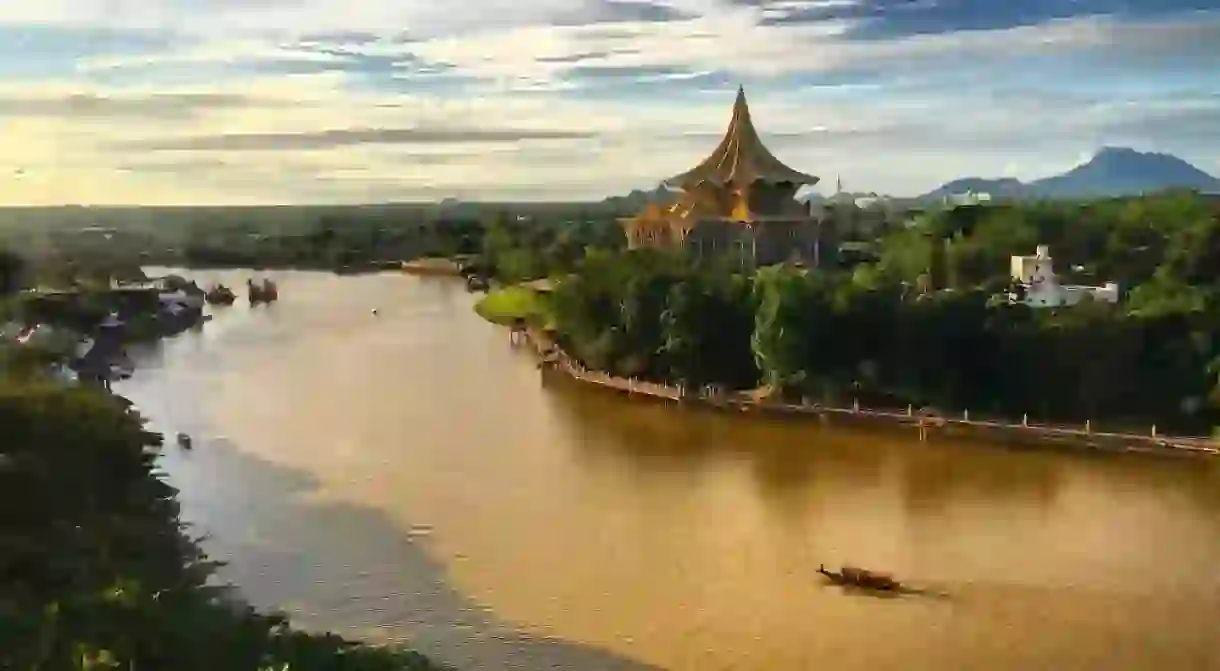Kuching: Malaysia's Bustling Island Metropolis

Kuching combines colonial heritage with cultural and religious diversity. Modern malls contrast against 100-year-old shophouses while mosques, temples and churches sit together in the same neighbourhood. Keep reading and be captivated by the intriguing story of Kuching, the ‘City of Cats’.
The White Rajahs
Historically, Sarawak belonged to the Sultan of Brunei. He gave the territory to Englishman James Brooke in 1841 as a reward for curbing piracy and stemming local rebellions. The Kingdom of Sarawak was born and ruled by the Brooke Dynasty. For over a hundred years, the White Rajahs governed Sarawak until Britain absorbed it in 1946 after World War II. Even the locals liked their colonial leaders who developed the city’s infrastructure, commissioned buildings such as the Astana, and expanded the territory to today’s state borders. The White Rajahs ruled and developed Sarawak in a different way to the rest of Malaya under the British. Kuching today retains a slight colonial air.

A modern melting pot
Apart from historical allure, Kuching’s diverse ethnic make-up creates a melting pot of ethnic groups, cultures and religions. The typical demographics of Malay, Chinese, and Indian Malaysians mix with indigenous people collectively referred to as the Dayak. Stroll through the small city and find a mixture of temples, mosques and churches. Sarawak’s oldest Taoist Temple, Tua Pek Kong, dates back to 1839 while the grand pink and gold Kuching Mosque sits near modern churches.



A bustling island metropolis
The Main Bazaar, Kuching’s oldest street, hugs the Waterfront stretching along the southern bank of the Sarawak River. Forming the soul of the city, the Main Bazaar retains preserved 19th-century Chinese shophouses occupied by merchants performing the same trade as their grandparents. Antique shops and handicraft stores line the chaotic street today. Carpenter Street runs behind with historic buildings transformed into modern bars and restaurants. Away from the historical core, colonial buildings contrast against the New Sarawak State Legislative Assembly Building’s modern architectural wonders.

Kuching: A secret tourist haven
Receiving a meagre percentage of Malaysia’s millions of annual visitors, Kuching offers an almost off-the-beaten-path experience. Tourists can shop for traditional knick-knacks in converted shophouses and bargain with seasoned vendors at the Sunday Market or buy designer labels at Hills Shopping Mall. Nearby Bako National Park offers a slice of the jungle, uninhabited islands and the chance to see wild proboscis monkeys. Or visitors can simply wander through both old and new Kuching in search of delicious treats, including TV celebrity chef Anthony Bourdain’s favourite Sarawak Laksa. And to top it all off, Kuching is among the smallest, cleanest, cheapest and safest cities in Malaysia.













